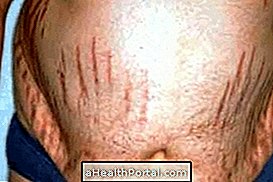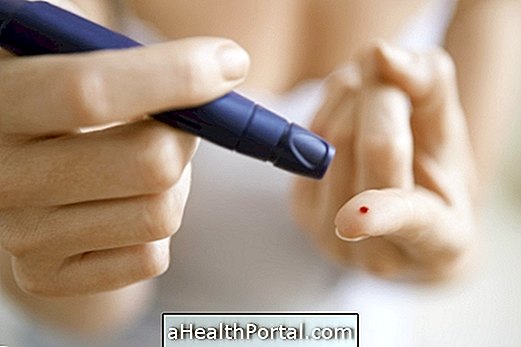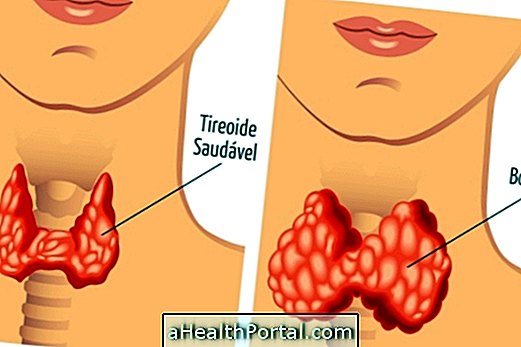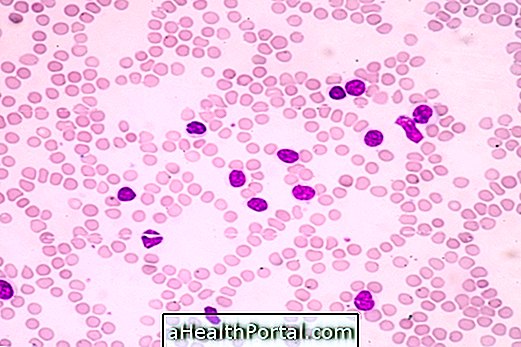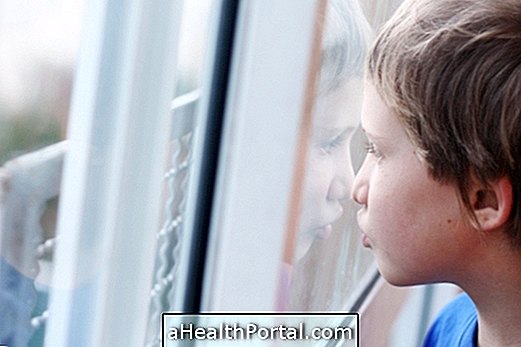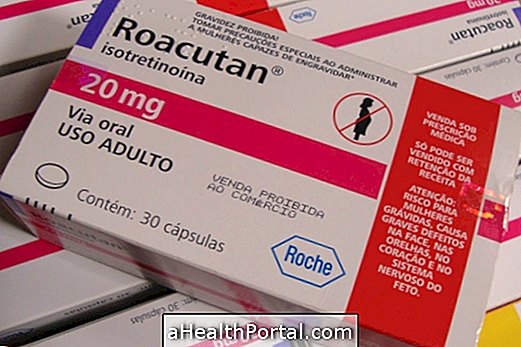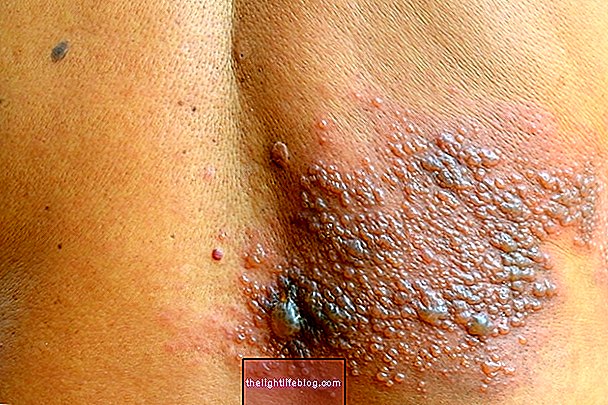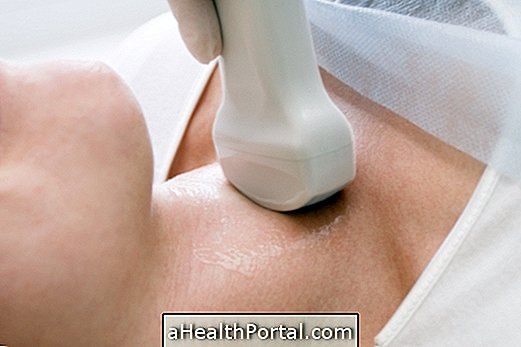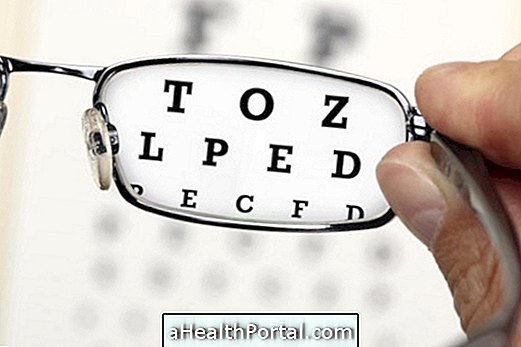Hypothyroidism is one of the most common endocrine diseases and is characterized by low thyroid activity, which causes it to produce fewer hormones than is necessary for the optimal functioning of all body functions.
This change is most common in women over 50 years of age who have close relatives with hypothyroidism, who have already removed part or all of the thyroid or who have received some type of radiation in the head or neck.
Subclinical hypothyroidism occurs when the person has normal T4 and high TSH, which usually does not produce symptoms and is only discovered in a blood test.
The most common cause of hypothyroidism is Hashimoto's Thyroiditis, an autoimmune disease, where antibodies begin to attack the thyroid gland as if it were harmful to one's own body. Understand this disease by clicking here.
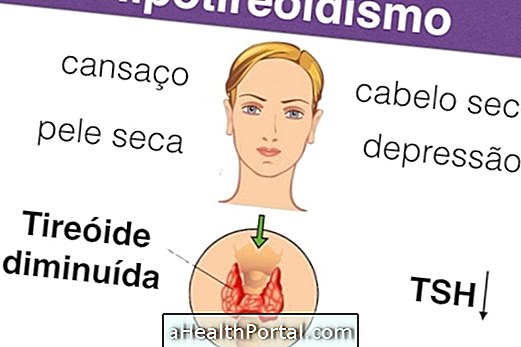
Signals and symptons
Signs and symptoms that may indicate low thyroid function may appear slowly over several years, and may be:
- Pain in muscles, joints;
- Cramps;
- Headache;
- Fragile and brittle nails;
- Rough and dry skin;
- Cold hands and feet;
- Swollen face, hands and feet;
- Loss of hair with no apparent cause and thinner, dry and dull hair;
- Heart rate slower than normal;
- Tendonitis in the hands or carpal tunnel syndrome.
- Tiredness, weakness;
- Dry skin;
- Swollen eyes with eyelid edema;
- Feeling cold;
- Difficulty concentrating;
- Weak memory;
- Speak slow
- Constipation;
- Nervousness;
- Decreased hearing or deafness;
- Increased weight without apparent cause;
- More serious or hoarse voice;
- Feeling of weakness or numbness;
- Change of personality, depression, dementia;
The causes of low production of thyroid hormones may be related to Hashimoto's thyroiditis; iodine deficiency, a condition known as goiter that causes thyroid enlargement; treatment against hyperthyroidism or use of medications such as lithium carbonate, amiodarone, propylthiouracil and methimazole.
People who have taken thyroid medicines to lose weight may also develop hypothyroidism because once these hormones are already present in the bloodstream, the thyroid can stop or slow down its natural production. Another less common cause is infection with viruses, such as influenza, can also cause hypothyroidism.
However, in addition to these causes hypothyroidism can also arise during pregnancy or in the postpartum period which tends to return to normal soon after. Also, it is important to remember that this disease decreases the woman's fertility, causing problems to get pregnant. See more here.
How to know if it is hypothyroidism
For the diagnosis of hypothyroidism it is necessary to observe the individual, taking care of their symptoms and performing a TSH blood test and also others such as:
- T3;
- Free T4 and total T4;
- Antibody screening against thyroid;
- Ultrasonography when nodules are noticed during palpation of the thyroid. If nodules are present the doctor may also request a biopsy during the performance of the ultrasonography;
- Thyroid mapping.
See how the thyroid self-exam can be performed to see if you have any nodules by clicking here.
Who needs to do thyroid tests
In addition to people who have signs and symptoms that may indicate hypothyroidism, these tests should also be performed by:
| Women over 50 | Who did radiation therapy to the head or neck | People with Type 1 Diabetes |
| During the pregnancy | Who did thyroid surgery | People with autoimmune disease |
| If you have goiter | If you have cases of thyroid disease in the family | In case of heart failure |
| Who Has Down's Syndrome | Who Has Turner's Syndrome | Production of milk out of pregnancy or without breastfeeding |
Hypothyroidism can arise in pregnancy
This thyroid disorder can occur during pregnancy and last only a few months after the baby's birth. This can happen because at this stage of life, the woman's body lowers her immunity so that the body itself does not expel the baby that is forming, like a virus or bacteria. With this natural decrease in immunity, the thyroid begins to produce fewer hormones, which can lead to symptoms, however, these are not always present.
Thus, it is normal for the physician to request T3, T4 and TSH exams during the prenatal period to evaluate thyroid function. Normally it is not necessary to carry out any type of treatment because in less than 1 year of postpartum thyroid values can return to normal. Learn about the risks of hypothyroidism in pregnancy by clicking here.
How To Treat Hypothyroidism
Treatment for hypothyroidism is relatively straightforward and should be done through hormone replacement with the use of synthetic hormones such as levothyroxine containing T4 hormone, which should be taken fasting for at least 20 minutes before eating breakfast.
There is no need to take T3 remedies because by taking T4 it is converted to T3 naturally by the body.
Here's how feeding can improve thyroid function in the following video.

After 6 weeks of starting the medication the doctor can check the symptoms that the individual presents or request a TSH examination to check if the dose of the drug needs to be adjusted until the amount of free T4 is normalized. After that, thyroid screening tests should be done 1 or 2 times a year to see if you need to adjust the dose of the medicine.
In case of subclinical hypothyroidism, when there are no symptoms involved, the doctor may indicate the use of medications because these may help decrease the risk of cardiovascular problems, which may be important for people who are overweight or who have high cholesterol or diabetes.
Learn more details of the treatment by clicking here and see some options for home remedies to regulate the thyroid.

